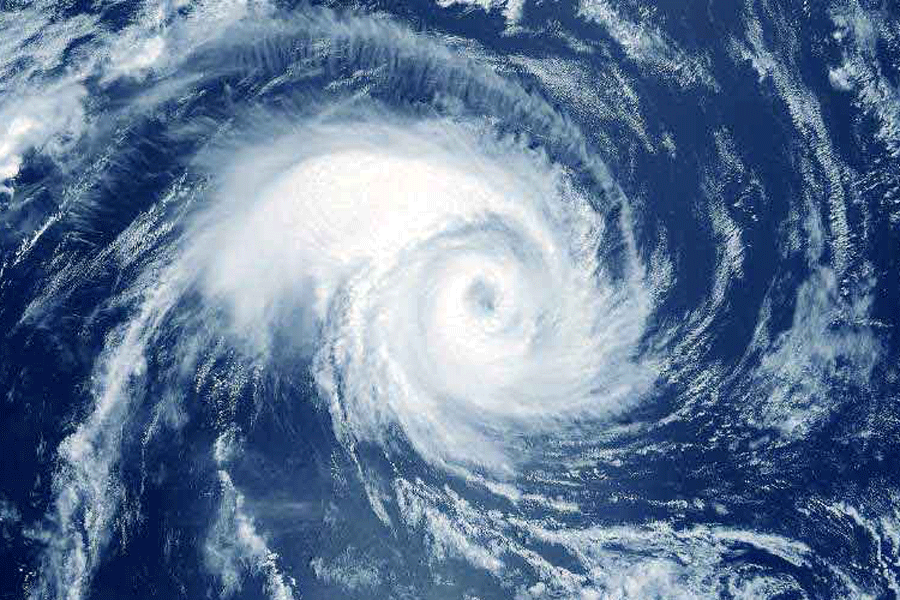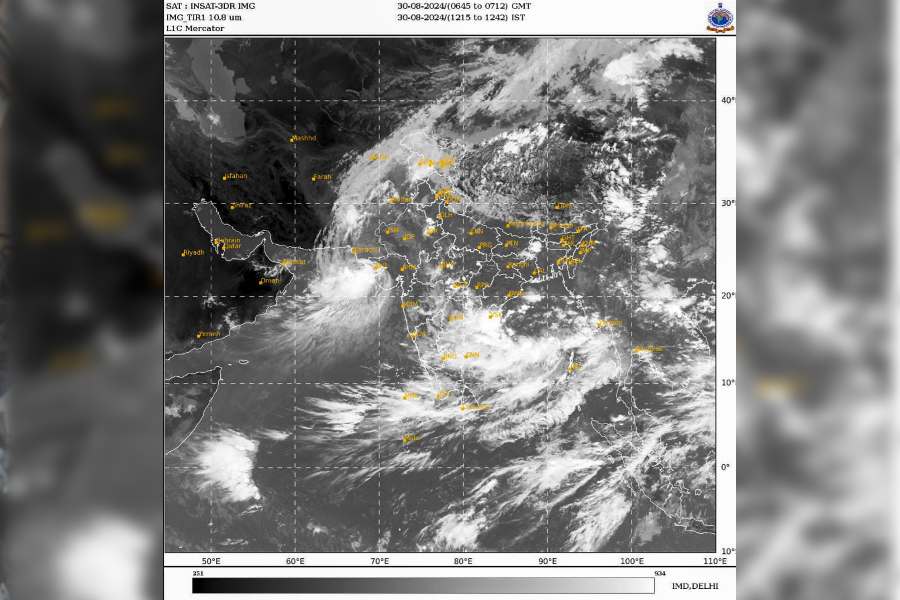A deep depression that triggered torrential rains and floods in Gujarat intensified into cyclone Asna on Friday, off the coast of Kachchh and the adjoining areas of Pakistan, the India Meteorological Department (IMD) said.
This is the first cyclonic storm in the Arabian Sea in August since 1976. The name Asna has been given by Pakistan.
Between 1891 and 2023, only three cyclonic storms formed in the Arabian Sea during August (in 1976, 1964, and 1944), according to the IMD.
The 1976 cyclone originated over Odisha, moved west-northwestward, entered the Arabian Sea, followed a looping track, and weakened over the northwest Arabian Sea near the Oman coast. The 1944 cyclone intensified after emerging into the Arabian Sea before weakening. In 1964, another short-lived cyclone developed near the South Gujarat coast and weakened near the coast.
The deep depression over the Kachchh coast and the adjoining areas of Pakistan and the northeast Arabian Sea moved westward with a speed of 6 kmph during the past 6 hours, intensified into cyclonic storm 'Asna' (pronounced as As-Na) and lay centered at 1130 hours over the same region, 190 km west-northwest of Bhuj (Gujarat), the IMD said.
It will continue moving nearly west-northwestwards over the northeast Arabian Sea, away from the Indian coast, over the next two days, the weather department said.
A deep depression is a low-pressure system with wind speeds ranging from 52 kmph to 61 kmph, while a cyclone has wind speeds between 63 kmph and 87 kmph.
Rain-related incidents in Gujarat have claimed 26 lives over the past four days. More than 18,000 people have been relocated, and around 1,200 rescued from flood-affected areas in the state.
In some cases, security forces used helicopters to evacuate people to safer locations, according to the State Emergency Operation Centre (SEOC).
Vadodara, the worst-hit city from the recent downpour, experienced some relief as the Vishwamitri river's water level dropped from 37 feet to 32 feet in the morning.
However, several low-lying areas remain flooded.
The river had crossed the danger mark of 25 feet on Tuesday morning following heavy rains and the release of water from Ajwa Dam.
Except for the headline, this story has not been edited by The Telegraph Online staff and has been published from a syndicated feed.












